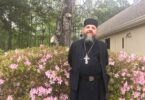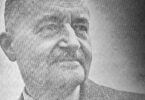Aid was forthcoming, and Poland halted the “world conflagration,” rendering it unable to pass over its “corpse.” The Viscount d”Abernon, British head of the Inter-Allied Mission to Poland waxed enthusiastic: “The Battle of Tours saved our ancestors of Britain and our neighbors of Gaul from the yoke of the Koran. It is probable that the Battle of Warsaw preserved Central and parts of Western Europe from a more subversive danger-the fanatical tyranny of the Soviets.” [1]Lincoln, p. 418
The war between Poland and the new Soviet Union was over in the fall of 1920. In the treaty signed at Riga, Latvia on 18 Mar 1921, Poland had won territory. The “new” Poland included parts of Western Volhynia; parts of the Minsk province; Grodno and Vilna provinces; Kholmshchyna; Podlasie; all from Russia. From the Austro-Hungarian Empire, part of Galicia. All of these districts were heavily Orthodox; estimates vary from 3.5 to 5 million additional Orthodox Christians added to Poland by the spoils of war. These new citizens of Poland had to register by “nationality:” Russian, Ukrainian, etc. “Byelorussian” was not acceptable, as Byelorussians were considered simply as a people who needed to be “taught” that they were actually Polish … ” [2]http://www.orthedu.ru/ch_hist/hi_rpz/10084pra.htm
The new Poland was emphatically Russophobic, and had no great respect or consideration for the Orthodox Church; especially the Russian Orthodox Church. Following Roman Catholic attitudes of the times, the Orthodox were considered as “schismatics,” and openly referred to as such in the Polish press. As soon as Poland was free from Russian rule, persecutions of the Orthodox began. In 1919, nearly 500 churches and chapels were confiscated, and given over to the Catholics; it was charged that the Orthodox had taken them from the Catholics previously. In the Kholm region alone, out of nearly 400 Orthodox churches of the pre-1917 era, a mere 53 were still in the hands of the Orthodox by September 1939. Many of those were not returned to the Catholics at all, but simply destroyed. These confiscations were carried out with such violence that even Catholics and Uniates protested. At the 1938 Hierarchical Council of the Russian Orthodox Church Outside of Russia, on 16/29 Aug , after hearing the report of K.N. Nikolaev on the persecution of the Orthodox Church in Poland, a resolution was made to both make the dire situation of the Orthodox in Poland known, and protest against it. It was stated that such persecutions were reminiscent of the outrages of the bolsheviks, and not worthy of “a cultured people.” All the Autocephalous Orthodox Churches, the Archbishop of Canterbury, and the League of Nations were notified of the situation in Poland by the Hierarchical Council. [3]ibid.,[4]http://www.orthodoxchristianbooks.com/articles/384/orthodoxy-unia-east-central-europe/,[5]Soldatov, G.M., editor Councils of Bishops of the ROCOR, 1938-1939, Sremski Kerlovci, Serbia (Russian) Minneapolis, Minnesota 2003 p. 28
Along with the millions of new Orthodox subjects of Poland were included several Russian Orthodox hierarchs: Bishop Elevferii (Bogoyavlenskii, 1868-1940, later Metropolitan of Vilna and Lithuania) after Feb 1922, when his Diocese of Vilna was included in Poland; Bishop Vladimir (Tikhonitskii, 1873-1959, later Met. of the “Paris group,”) of Bialystok had been given charge of the Grodno Diocese by Patriarch Tikhon; Bishop Dionisii (Waledinskii, 1876-1960, later Met. of Warsaw & Poland) of Kremenets, a Vicar of the Diocese of Volhynia, administered that part of the Diocese of Volhynia then included in Poland; Bishop Panteleimon (Rozhnovskii) of Pinsk had also been assigned by Patriarch Tikhon to oversee the parishes in Podlasie; and Bishop Sergey (Korolev, 1881-1952, later Archbishop of Kazan and Chistopol) who had been consecrated in Poland by order of Patriarch Tikhon to administer the Kholm Diocese. In 1921, Patriarch Tikhon assigned Archbishop Seraphim (Chichagov, 1856-1937, later Met. of St. Petersburg and New Martyr) as Metropolitan of Warsaw, but Polish authorities refused to allow him to enter Poland. Archbishop George (Yaroshevskii, 1872-1923, later Met. of Warsaw and Poland) had travelled to Warsaw from Yugoslavia, where he had gone after evacuating Southern Russia with General Denikin’s troops. These hierarchs were divided into two camps: those who insisted on strict adherence to the Canons and obedience to Patriarch Tikhon, and those who felt that they had to obey the Polish government and gain autocephaly for the Church in Poland. Those in the second camp, Archbishop George (Yaroshevsky) and Bishop Dionisii (Waledinskii), were decidedly in the minority. [6]op. cit. 37
“Obedience to the Polish government” on the part of the hierarchs meant that they adhere to Temporary Rules originating in the Ministry of Education & Religion to guide the Orthodox Church in Poland, which would bring “far-reaching government control over the life of the Orthodox Church in Poland.” It was also made clear that “the interference of foreign ecclesiastical authorities,” that is, the Russian Church, “in the life of the Church of Poland was undesirable.” In short, the Polish government insisted that an Autocephalous Orthodox Church of Poland was a necessity, and they would settle for nothing less. [7]op. cit. 37
The divisiveness over the autocephaly of the Polish Church was incredibly bitter. Eighty five of the Volhynian parishes of Bishop Dionisy refused to communicate with him; some even claimed allegiance to Bishop Maksim (Ruberovskii, 1878-1937, New Martyr) of Zhitomir on Soviet territory, and some demanded to be placed under Bishop Vladimir (Tikhonitskii) in the Grodno Diocese. Bishop Sergey’s (Korolev) consecration to the Episcopate was declared “invalid” by the Polish authorities, and he was confined to the St Onouphrius Monastery, unable to perform his duties, and eventually deported to Czechoslovakia. In January 1922, a Bishop”s Sobor was held in Warsaw. In attendance were Archbishop George (Yaroshevskii), Bishop Dionisy (Waledinskii), Bishop Panteleimon (Rozhnovskii), and Bishop Vladimir (Tikhonitskii)-under pressure from the authorities. Also in attendance were the Synod Secretary, Alexander Inozemtsev (1882-1948), and Archpriest Alexander Gromadskii, (1882-1943) rector of the Volhynia Seminary, and soon to be consecrated after tonsure as Alexei, Bishop of Lutsk. Bishops Panteleimon and Vladimir refused to sign the “Temporary Rules” as an infringement upon the rights of the Orthodox in Poland. As a result, Bishop Panteleimon was arrested and interned at the Zhirovitsky Monastery, and Bishop Vladimir was arrested and interned at the Dermansky Monastery. [8]http://unia-vs.narod.ru/material/vc.htm,[9]http://ru.wikipedia.org/wiki/%D0%93%D0%B5%D0%BE%D1%80%D0%B3%D0%B8%D0%B9_(%D0%AF%D1%80%D0%BE%D1%88%D0%B5%D0%B2%D1%81%D0%BA%D0%B8%D0%B9)
References
| ↵1 | Lincoln, p. 418 |
|---|---|
| ↵2 | http://www.orthedu.ru/ch_hist/hi_rpz/10084pra.htm |
| ↵3 | ibid., |
| ↵4 | http://www.orthodoxchristianbooks.com/articles/384/orthodoxy-unia-east-central-europe/, |
| ↵5 | Soldatov, G.M., editor Councils of Bishops of the ROCOR, 1938-1939, Sremski Kerlovci, Serbia (Russian) Minneapolis, Minnesota 2003 p. 28 |
| ↵6 | op. cit. 37 |
| ↵7 | op. cit. 37 |
| ↵8 | http://unia-vs.narod.ru/material/vc.htm, |
| ↵9 | http://ru.wikipedia.org/wiki/%D0%93%D0%B5%D0%BE%D1%80%D0%B3%D0%B8%D0%B9_(%D0%AF%D1%80%D0%BE%D1%88%D0%B5%D0%B2%D1%81%D0%BA%D0%B8%D0%B9) |










